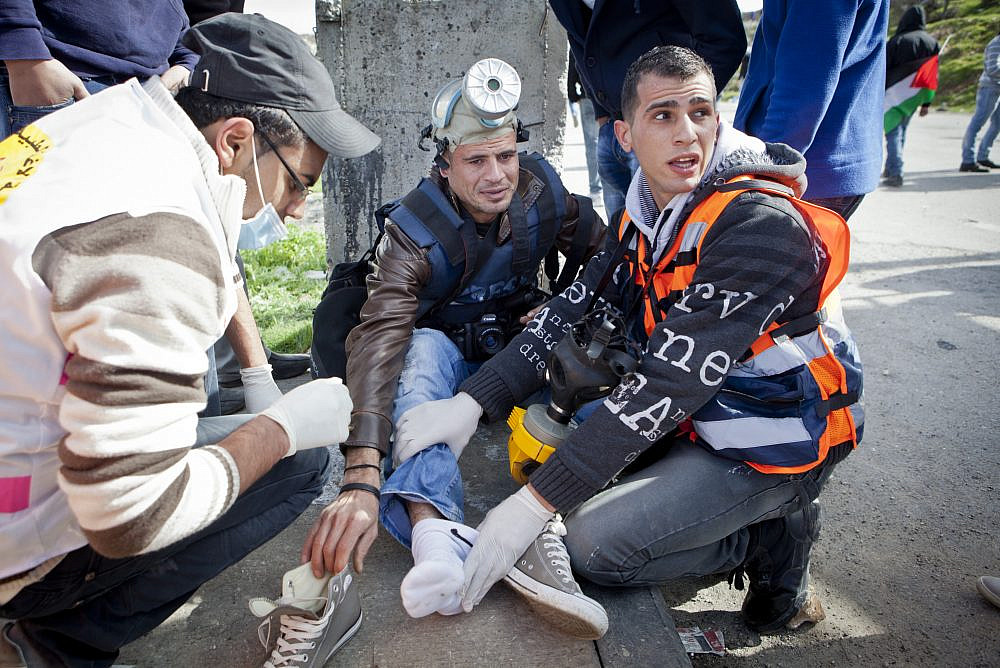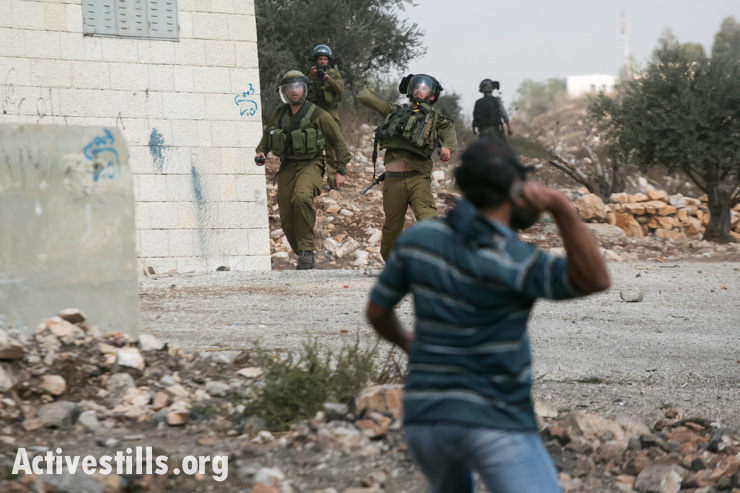A Brief Colonial History Of Ceylon(SriLanka)
Sri Lanka: One Island Two Nations
A Brief Colonial History Of Ceylon(SriLanka)
Sri Lanka: One Island Two Nations
(Full Story)
Search This Blog
Back to 500BC.
==========================
Thiranjala Weerasinghe sj.- One Island Two Nations
?????????????????????????????????????????????????Thursday, February 27, 2020
No compensation for Palestinian journalist shot by Israeli army
Claiming clashes with West Bank protesters constituted an 'act of war,' court excuses IDF from paying damages after shooting photographer in the leg.
 Illustrative
photo of Palestinian photojournalist injured during protests between
Beitunia and Ofer prison in the West Bank, Feb 15, 2013. (Mati Milstein)
Illustrative
photo of Palestinian photojournalist injured during protests between
Beitunia and Ofer prison in the West Bank, Feb 15, 2013. (Mati Milstein) By Oren Persico and The Seventh Eye February 26, 2020
By Oren Persico and The Seventh Eye February 26, 2020A Palestinian journalist who was shot in the leg by Israeli soldiers while documenting a demonstration in the West Bank in 2015 will not be paid damages, despite the fact that the shooting violated army regulations.
The Jerusalem Magistrates’ Court rejected this week a lawsuit by Palestinian photographer Ahmad Tal’at against the IDF, who he said shot him in his right leg while he was covering the weekly protest in the village of Kufr Qaddum. Although the court acknowledged that Tal’at had been shot by Israeli forces — despite the army’s claims to the contrary — it ruled that the IDF is not obligated to pay him damages, since the incident took place during an “act of war.”
According to the lawsuit, Tal’at was wearing a press flak jacket and helmet when he was shot. He was also carrying three cameras with large lenses, which he argues made it easy for security forces to recognize him as a member of the press rather than a protestor.
The procedures also do not describe any scenario in which soldiers may open fire at photographers.
According to the lawsuit, Tal’at was shot approximately 20 minutes after clashes between the protesters and military forces subsided. Tal’at says he was shot while standing away from the crowd on the side of the road, along with a number of journalist friends. He demanded the Israeli army pay him NIS 40,000 in damages.
IDF Attorney Ariel Ararat argued that the clashes in Kufr Qaddum that day posed a direct threat to the soldiers present. Ta’lat’s lawsuit, the IDF said, is “another in a series of cases in which those who were among the rioters and those riling up the crowd to riot dare to file a lawsuit as if they are the victims.”

The army further denied that the shooting occurred after clashes had ceased, arguing that even if Tal’at was wounded that day, “it was in the context of attacks by the rioters that endangered the security forces there.”
Tal’at asserted in his lawsuit that he was hit in the leg by a Ruger bullet. According to an affidavit filed by Commander A.N., the former deputy commander of the Border Police company stationed in the area, not a single soldier was using Ruger bullets. A.N. also said that he did not witness anyone injured or evacuated from the area. “If a journalist was wounded, I would have seen it and reported it,” stated A.N., adding that there was no mention of Ruger bullets or injuries in the army’s report from that day.
Judge Abbas Aasi, though, dismissed this claim and ruled that “according to the evidence provided, security forces used Ruger bullets. This was noted in the DCO’s [District Coordination Office] operation log. Furthermore, it was proven that the plaintiff was wounded by the gunshot. This also appeared in the ‘Samaria Morning Report’ which noted a ‘wounded Palestinian journalist […] the medical records attached by the plaintiff, which include x-rays, show a bullet lodged in his right knee.” A defense witness who was called to testify also told the court that the soldiers did in fact fire Ruger bullets.
Aasi also noted that the army did not contradict Tal’at’s claims that he was dressed in a manner that identified him as a journalist. “I believe that harming the journalist — the plaintiff — should have been avoided. The shooting of a journalist runs counter to open-fire regulations and the IDF’s directives on journalists.”
The judge, however, still ruled that the incident took place during an act of war for which the state enjoys immunity from liability for damages. The incident, he argued, included young men whose faces were covered and who were throwing stones, some using slingshots. “There is no doubt that protests and clashes take place on Fridays, and thus we must view the day of clashes as a whole, and the attempt to separate it into stages appears artificial,” wrote Aasi.
This article was first published in Hebrew on the Seventh Eye. Read it here.
